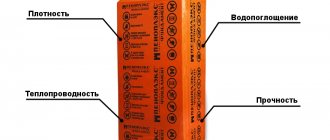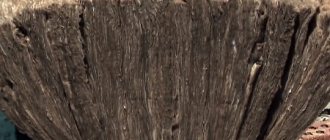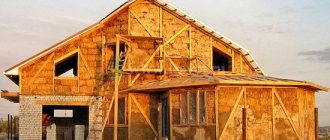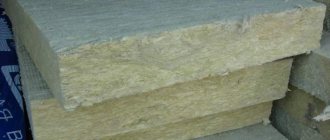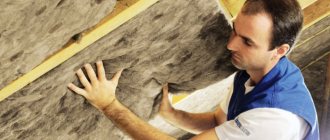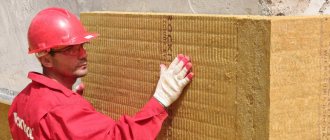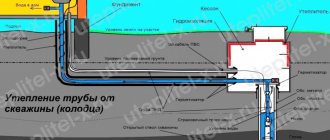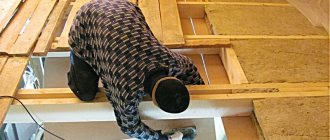Mineral wool
Mineral wool is used not only as insulation, but also as a fire-retardant material. For example, basalt wool is used in places with elevated temperatures, where other thermal insulation, such as polystyrene foam, cannot be installed.
Advantages
Positive qualities of insulation based on mineral wool:
- Long service life;
- Large selection of materials, both in density and thickness;
- Fire resistance;
- Not food for rodents;
- Vapor permeable;
- Do not support the growth of mold and fungi;
- Good sound insulation;
- Low thermal conductivity;
- Easy installation.
Flaws
Although rodents are not interested in mineral wool as food, they can live in it. Also, mineral wool must be protected from the wind, otherwise the fibers and heat will be blown away. Therefore, when insulating walls, it is necessary to install a windproof layer.
Mineral wool in rolls
Mineral wool has a low thermal conductivity coefficient due to the air between the fibers. But if you press it down, the fibers will be compressed, and there will be much less air in them. As a result, thermal conductivity will increase and it will become easier for cold air flows to pass into the room, and for warm ones to escape. Therefore, mineral wool insulation is installed loosely, but at the same time tightly, so that there are no gaps.
When working with mineral wool, you must wear personal protective equipment, as it generates dust. If glass wool dust gets into the respiratory system, skin or eyes, irritation occurs.
Mineral wool must be protected from moisture, especially those based on basalt. If the insulation gets wet, you will have to throw it away, since even after drying, its thermal insulation properties will not return.
Types of raw materials and their composition
The general concept of mineral raw materials refers to a building material that has a fibrous structure. It is made from minerals mined as minerals. Depending on the main raw materials contained in the composition, there are:
- fiberglass;
- basalt wool (stone);
- slag wool
Basalt fiber is produced in production from basalt, a stone of volcanic origin. Being the most common rock on the planet, it is actively used as an affordable construction raw material.
To obtain stone wool, the stone is crushed and heated at temperatures above 1000°C. Under such conditions, the natural element melts. The resulting mass becomes viscous, like condensed milk.
In this video you will find out which insulation is better:
Next, the viscous stream is inflated with air. The resulting fibers are glued together with a special composition based on phenol-formaldehyde, but in quantities that are safe for the human body. Ready-made basalt mineral wool can be found in stores in the form of slabs.
Smelting of ore in blast furnaces produces slag. It is used as the main raw material to obtain the next type of insulation. Slag wool is obtained by reacting ore with magnesium and calcium carbonate. The use of this material is permitted only for insulation of industrial premises. This type of raw material contains harmful substances in large quantities.
The most affordable insulation material in terms of price is glass wool. The raw materials include quartz sand and broken glass. Unlike the two above-mentioned analogues, fiberglass does not have additives that are harmful to health. The industry produces products in the form of mats, slabs, and rolls.
Glass wool
Fiberglass insulation is made from broken glass, as well as sand, dolomite, and soda. Compared to basalt wool, glass wool has fibers that are 2 or even 4 times longer, making it stronger and more elastic. Therefore, after pressing, this thermal insulation restores its porosity, even with a minimum material density of 11 kg/m3.
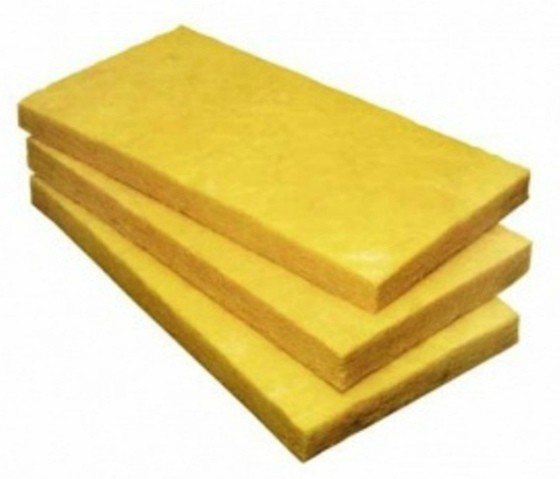
Glass wool in the form of slabs
The maximum operating temperature of glass wool is +450°C, the minimum is -60°C. The thermal characteristics of basalt and glass wool insulation are the same. The maximum density of glass wool is 130 kg/m3.
Advantages
Glass wool insulation has the following positive qualities:
- Resistant to chemicals, do not cause metal corrosion;
- Do not shrink;
- Frost-resistant;
- They have low weight and low hygroscopicity;
- They absorb sound well.
Flaws
At temperatures above the maximum, glass wool loses its elasticity and shape, which is why it is not recommended for use in places with elevated temperatures, such as chimneys. When exposed to constant fire, it burns out.
Note! To work with this insulation, you must use personal protective equipment. When glass dust particles come into contact with the skin, eyes and respiratory system, they cause irritation.
Comparison of materials
To make it easier to choose mineral wool or basalt wool, as well as other popular insulation materials, important characteristics are collected in the table.
| Characteristic | Basalt wool | Glass wool | Styrofoam | Foamed polyurethane |
| Density, kg/m 3 | 40 — 220 | 20-80 | 15 – 35 | 35- 45 |
| Thermal conductivity, W/m*S | 0,042 – 0,047 | 0,035 – 0,039 | 0,02 | |
| Vapor permeability, mg/m*h*Pa | 0,3 | 0,5 – 0,6 | 0,05 | 0,018 |
| Life time | 25-40 | 15 — 30 | 40 | 90 |
| Price, rub./m3 | 1150 – 3500 depending on density | 1500 rub/m 2 with a layer of 50mm |
The article discusses the differences between different types of mineral wool depending on the characteristics and methods of application. We hope the article will help you make the right choice.
Mineral-based stone wool (aka) is presented in the form of insulation, which is in quite high demand in the building materials market.
Currently, there are a considerable number of manufacturers of this type of mineral wool, which is actively used as a reliable and effective insulation material.
Before you buy mineral wool slabs and start using them, you should pay attention to the reviews and technical characteristics of this insulation.
Basalt wool
Basalt thermal insulation is made from gabbro-basalt ore. The maximum temperature that basalt insulation can withstand is +1200°C. There are a large number of sizes, densities and shapes of this insulation.
Advantages
Since basalt wool is made from stone, it is non-flammable. Due to this and the high maximum operating temperature, it is used in places where it is necessary to protect the structure from the effects of high temperatures. For example, basalt is excellent for insulating places where a chimney passes through the attic floor.
Note! Although basalt is non-flammable, it does not provide complete fire safety, so it is recommended to use additional fire protection measures along with it.
Basalt insulation does not shrink and also has excellent vapor permeability. Therefore, it is recommended to use it for wooden structures. In addition, basalt thermal insulation does not absorb water from the air and rodents do not eat it.
Flaws
Basalt insulation cannot be considered environmentally friendly, although it is made from natural components. To improve consumer qualities, chemical additives are added to it, which at high temperatures can release harmful volatile substances.
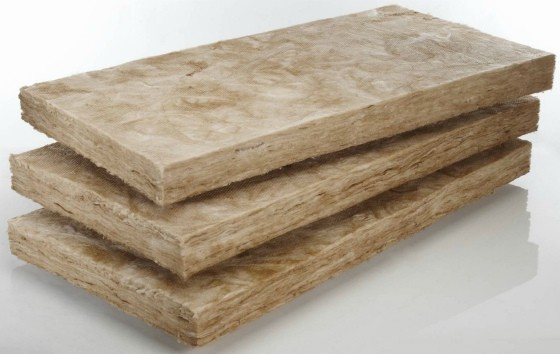
Thermal insulation from gabbro-basalt ore
Rodents are not interested in basalt as food, but they can live in it. As a result, it is necessary to install additional protection against their penetration inside.
Basalt wool does not absorb moisture from the air, but when water hits the surface, it quickly draws it in. Therefore, it cannot be used for insulating foundations, basement floors and blind areas. Also, basalt cannot be considered a good sound insulator, since it only retains airborne noise and allows shock to pass through.
For insulation with low density, wind protection is required, since they are blown. It can also be blown out at the joints, so the slabs must be laid staggered. If it is necessary to lay thermal insulation with a layer of 100 mm, then it is better to do this in 2 layers of 50 mm each.
Basalt insulation does not fit tightly in places where it cannot be positioned at an angle of 90°. Therefore, it is not considered the best option for domes or similar frame structures. When working with basalt wool, you also need to use protective equipment, as it emits dust.
Glass wool or stone wool, how to choose?
Fiber insulation materials even differ in appearance in color and texture, not to mention the technical characteristics and properties of the materials. You are still at a crossroads: whether to buy stone wool or buy glass wool the old fashioned way. Let's compare them according to objective criteria, here they are!
- Feedstock
glass wool is taken from glass production waste or broken glass. It is easy to turn such a low-melting mixture into a fibrous material. But from the title
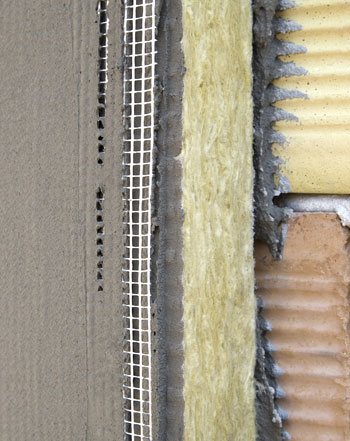
stone mineral wool, you can understand that the raw materials for production are stones, and environmentally friendly mountain rocks. Therefore, it is easy to explain the use of mineral wool material in residential premises, multi-storey and private houses. - Fire safety
For a residential building and a production workshop, this is a significant factor in the choice of material. Low-melting glass wool melts into a dense cake over an open fire. The same cannot be said about cotton wool made from molten stones. Its melting point is over 1000 °C, and with an open fire there is a slight melting of the organic binder in the structure of the material. It should be noted that mineral wool made from rocks is used for fire protection. Such a cover can contain flames for 180 minutes, which can be valuable for the home and production workshop.
- Application temperature.
Basalt mineral wool is used as technical insulation, since it perfectly retains its properties when heated to 650 °C. While for glass wool there is a limitation of operating temperatures to 400 °C maximum. That is why basalt is used for insulation of heating devices, boilers, furnaces and other heat-intensive objects.
- Chemical resistance.
Basalt fibers are inert to alkaline and acidic environments, therefore wool from molten stones is well preserved under screed and plaster. The same cannot be said about glass wool. The threads of the material react with the finishing and building mixtures, after which the insulation hairs become brittle.
- Which sound insulation is better for walls and partitions, read the article at the link.
- Shrinkage during use.
Basalt slabs and mats are used in difficult operating conditions, since cotton wool threads retain their elasticity even under the influence of constant and intense vibration. Glass wool absorbs moisture from the air, which makes the insulation brittle. In addition, glass wool gradually slides off vertical surfaces. The results of an independent examination can be cited as proof. During it, reinforced concrete panels of houses were opened after 5–15 years of operation. It became clear that all that was left of the glass wool was dust.
- Practicality in installation and operation.
An important indicator for private owners and large developers. For the former, this is a way to save money by installing the insulation themselves, but for the latter, it significantly reduces the cost of paying for the work of the installation team. Due to its elasticity, basalt mineral wool easily fits into the frame, it can be laid on the floor under a screed, mineral wool can easily withstand the load in the roofing pie of a flat roof and serves perfectly as part of a facade system. But glass wool, due to compressibility and shrinkage, is limited in use and is widely used in unloaded structures.
Comparison table between stone wool and glass wool
| Glass wool | Stone wool | |
| The basis | Glass and glass waste | Rock stones |
| Fiber type | Soft and long | Elastic and short |
| Hydrophobicity | Over 1 kg/m2 | 1,0 % |
| Thermal conductivity coefficient (average) | 0.039 W/m*K | 0.040 W/m*K |
| Density | Low | High |
| Temperature Range | -60 to 500 | -190 to 1000 |
Still wondering what is better to buy: stone mineral wool or glass wool? Then, let's arrange the last round - the price of insulation! How to optimally spend your budget on insulation, which material will help you save money on finishing, and which can ruin you? Read!
Dependence on the density of the material and the location of insulation
A material with a certain density has a specific purpose. Thus, basalt insulation with a density of 25-30 kg/m3 is intended for thermal insulation of floors. He should not experience any stress on himself. 35 kg/m3 is used for the roof, 45 kg/m3 can be installed vertically. Materials with a density of 50-60 kg/m3 are used in layered installation, and 70-80 kg/m3 are installed in ventilated facades.
For plaster facades it is necessary to purchase slabs with a density of 140-150 kg/m3, and for flat roofs with a load - 160-180 kg/m3.
When choosing a material, you should take into account that the denser the insulation, the higher its price, since more raw materials were spent for production. But at the same time they have the same thermal characteristics.
ADVANTAGES AND DISADVANTAGES OF INSULATION WITH BASALT WOOL
It is worth first of all noting that the presented insulation (basalt insulation Izovol, for example) exhibits a high degree of resistance to high temperatures. In addition, the basalt wool slab is different:

Basalt wool packaging 3 kg
- Complete absence of toxic emissions when heated;
- Resistant to dirt;
- Resistant to the formation of fungal mold;
- High melting point.
- Ease of transportation.
By the way, manufacturers claim that the insulation has a service life of fifty years. If all operating rules are followed, this period can increase by 10-15 years.
This basalt insulation has a low degree of sound conductivity, which allows this material to be used to dampen unnecessary acoustic vibrations.
In addition, this material exhibits high vibration resistance properties, which makes it better than mineral wool. The presented insulation is not an explosive substance, and therefore can be used to provide insulation for hot and aggressive environments.
The chemical composition of this substance does not contain elements of limestone rocks and dolomite, as does the adhesive for mineral wool insulation, which effectively prevents rodents from entering the insulated area.
Basalt slab is characterized by low specific gravity along with high insulating properties. The ability of a high degree of resistance to various types of mechanical influences is associated with the structural features of this material.
The fact is that cotton wool fibers are located in horizontal and vertical directions. Such structural features lead to the acquisition of a high degree of rigidity of the insulation, which directly affects its practical properties.
Basalt wool is famous for its high water-repellent properties. This material is easily able to allow moisture to pass through, but does not allow it to accumulate inside. But, despite the large number of positive qualities, this material has some disadvantages.
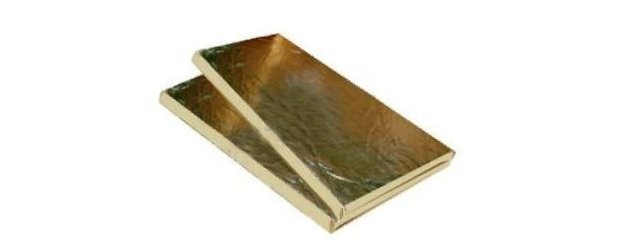
Foil basalt wool ROCKWOOL
The presented insulation has a fairly high cost, which makes it a fairly privileged building material.
Another significant drawback is the peculiarities of the composite structure of the insulation (Izover thermal insulation, for example). Its slab has a considerable number of seams at the joints; this, during installation, can cause a decrease in a number of important thermal insulation qualities.
The not very high level of strength is also a negative point. Some experts believe that the use of a phenolic binder in the foam production process makes the material highly environmentally unsafe.
DIFFERENCE OF BASALT WOOL FROM OTHER MINERAL-BASED SEALANTS
When considering basalt wool, you can pay attention to a number of advantages over other similar types of insulation.
One of the most significant factors is the high level of chemical and biological passivity of the presented basalt insulation.
This compares the material favorably with glass wool. Cotton wool, which is made using basalt, is equipped with thick and short fibers.
Thanks to this structure, the plasticity of the material increases several times (for example, Ursa thermal insulation). In addition, the likelihood of the insulation shedding during installation is reduced to almost zero.
Based on the fact that the presented raw materials are characterized by a large volume and excellent strength characteristics, this point is reflected in a slight increase in thermal insulation qualities.
It is worth noting that all insulation materials created on the basis of mineral substances are highly likely to irritate the upper mucous membranes.
Therefore, to avoid particles of the substance from entering the lungs, personal protective equipment should be used and high concentrations of the substance should not be allowed to occur in the air.
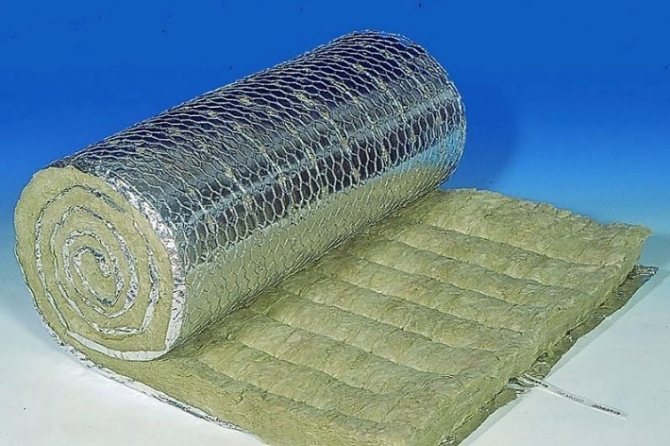
Basalt mineral wool
FEATURES OF MINERAL WOOL
First of all, you should pay attention to the cost of this type of insulation. A mineral wool slab costs an order of magnitude cheaper than its basalt counterpart.
This is due to the high availability and low cost of the production process. The presented material, when packaged, takes up quite a bit of space, which makes it better than its basalt counterpart.
This indicates that mineral wool weighs little, which directly affects the reduction in the cost of its transportation to the required construction site. Mineral wool is different:
- Low density (for example, Hotrock insulation);
- Light weight;
- Formation of less load on the structure.
Glass wool is not prone to ignition and exhibits good biological resistance and chemical passivity.
The presented insulation is not capable of initiating harmful corrosion processes in nearby metal surfaces.
Mineral wool, with an eye to the modulation features, at a temperature of +400 degrees Celsius begins to change its structure and lose a number of useful properties.
The length of the fibers of this insulating substance is twice the length of basalt fibers. Such structural features give glass wool a high degree of elasticity.
This material can be used in structures that have irregular geometric parameters and an uneven surface.
The sound insulation characteristics of mineral wool are better than those of its basalt counterpart. One of the main disadvantages of this insulation is its tendency to shrink.
This is due to the fact that after a certain period of time, fibers made using glass and quartz begin to crystallize.

Basalt super thin fiber (BSF)
This can be caused by poor quality installation work, especially if Parok basalt thermal insulation is installed. A high degree of caution must be exercised when working with mineral wool - it can cause skin irritation and harm the lungs and eyes.
Ceiling insulation in a wooden house - an alternative to mineral wool
When planning to carry out work on ceiling insulation, it is worth familiarizing yourself with all the materials that are on the market today. In addition, their range is constantly expanding - something new appears all the time that has good thermal insulation properties.
Instead of mineral wool, you can use ecowool, expanded polystyrene, expanded clay, or even sawdust with additives. In a word, if you wish, you can find a worthy alternative to mineral wool that will be suitable in quality and cost.
By the way, some of the listed materials can be laid not only from the side of the attic, but also from the inside of the room - the same mineral wool is suitable for this. However, here it is worth considering that it is necessary to lay the profiles at a sufficient height from the ceiling in order to put thermal insulation material on them. These profiles can then be covered with plasterboard, for example. Experts still recommend carrying out insulation work from the attic side. But in some cases, laying thermal insulation material on the side of the room becomes the only possible option.
In any case, you need to do everything possible to make a wooden house warm and comfortable.
